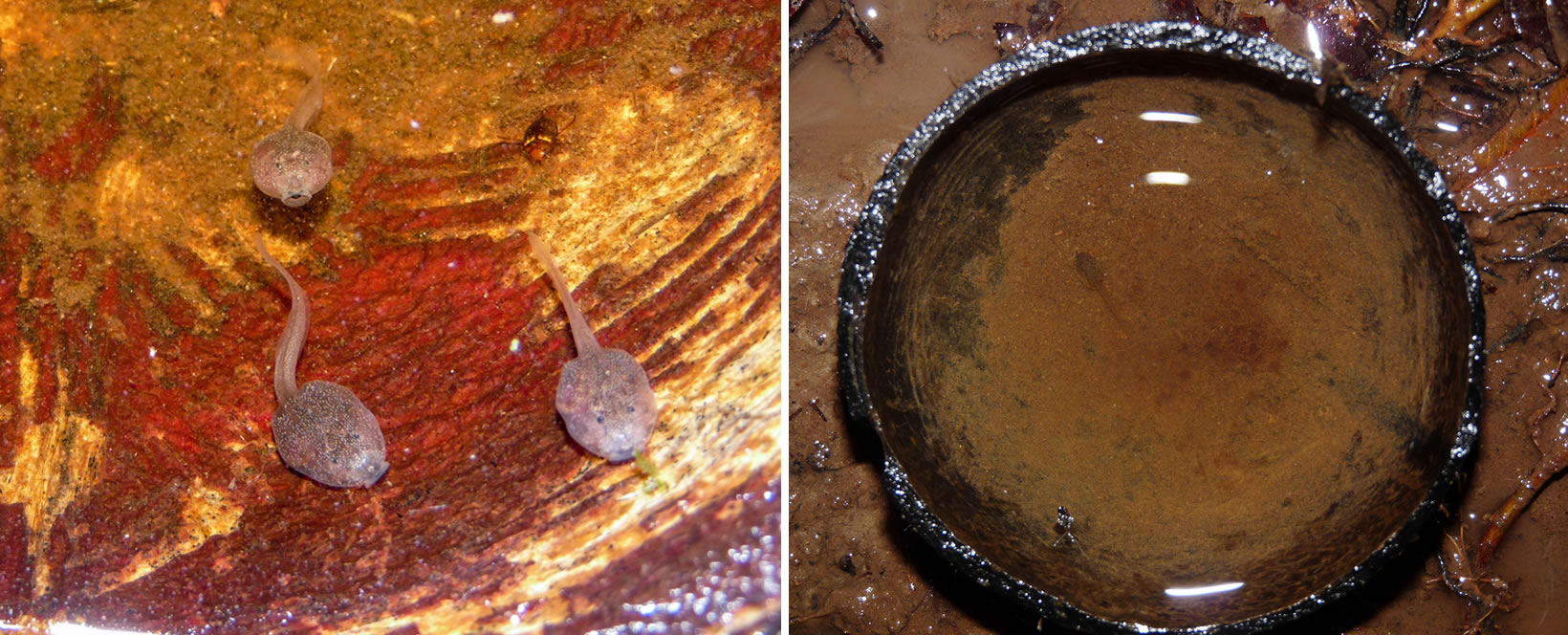In order to increase the available sites for development of the tadpoles of the Golden Poison frog (Phyllobates terribilis), 84 coconut halves were installed in the Rana Terribilis Reserve, in 4 months 107 tadpoles in 41 coconuts were recorded.
The Golden Poison or Terribilis frog (Phyllobates terribilis) is an amphibian belonging to the Dendrobatidae family, and is known as the most poisonous vertebrate in the world for the presence of toxic alkaloids in its skin. It is endemic to the Colombian Pacific coast, it has a very restricted distribution, and its habitat is the humid jungles in the Cauca and Chocó departments, where forests with high rates of rain (5,000 mm or more) between 90 and 200 meters above sea level predominate.
This species is endangered (EN) according to the threat categories of IUCN and its populations are in decline as a result of human activities such as deforestation, expansion of the agricultural frontier, illicit crops and pollution resulting from fumigation.
As a result of the activities of Juan Sebastian Forero under his degree work, during the months of October 2013 to January 2014, 84 coconut halves were installed in areas of the reserve where it is common to see individuals of the frog with the aim of increasing the available sites for development of the tadpoles of this species. As of November 2013 recording of the tadpoles in the installed coconuts began and subsequent detailed review of these, showed they belonged to P. terribilis.
At the end of January 107 tadpoles in 41 coconuts in the reserve, which represents 47.61 % of all installed coconuts, were recorded. The monthly increase in tadpoles was notable as in November 10 were recorded, in December 30 and finally in January 107.
The implementation of this strategy effectively increases the survival of tadpoles of P. terribilis allowing a greater number of individuals to reach youth and adult stages. In addition, temporary pools where this species lays its tadpoles depend on constant rain to keep the water level needed to ensure the survival of tadpoles, and coconuts maintain the water level for longer and can be filled manually.
The Natural Frog Reserve Rana Terribilis is located in the department of Cauca, in the town of Timbiquí in the urban area of the county seat, on the right bank of the River Timbiquí, it has an area of 47 hectares, between 10 and 50 meters above sea level and belongs to the area of tropical rain forest.
Supported by:
 |
 |

